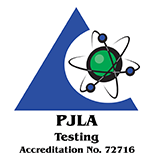Background: The mesophilic sporeforming anaerobes all belong to the genus Clostridium spp. The various species of clostridia are basically either proteolytic (putrefactive) or nonproteolytic (saccharolytic). One group consists of C. sporogenes, the proteolytic strains of C. botulinum, and other relatively heat resistant proteolytic anaerobes. The other group consists of C. perfringenes, the nonproteolytic strains of C. botulinum, and other relatively non-heat resistant non0proteolytic clostridia.
With the high heat resistance of many strains of mesophilic sporeforming anaerobes, their ability to grow in the absence of oxygen and over a range that covers the temperature of the normal storage of canned and other processed foods, including refrigerated storage of cooked or cured meats and modified atmosphere packaged foods, these anaerobes are of primary importance in the spoilage of low-acid foods packed in hermetically sealed containers.
Method
Media
Turn Around Time
Sample Required
Type of Test
Detection Limit
Related Resources
APHA CMMEF 23.541
Cooked Meat Medium
3 to 5 Business Days
10 to 100 g or mL or 1 swab
Quantitative Most Probable Number Analysis
<3 MPN/g; <3 MPN/g; Presence / Absence
Link FDA Bad Bug Book Version 1 – Clostridium botulinum
PDF FDA Bad Bug Book Version 2 – Clostridium botulinum
Analysis Description:
Cooked Meat Medium is used for the cultivation of anaerobic microorganisms and is used to differentiate saccharolytic from proteolytic Clostridium spp. Saccharolytic species rapidly form acid and gas without digesting the meat. Proteolytic species break down the meat to amino acids and form sulfur compounds (blackening and putrid smell).
The sample is diluted with a buffer and blended. Multiple extractions are made and placed into duplicate sets of test tubes in a multiple tube format containing Cooked Meat Medium, which have been boiled to remove oxygen, which is toxic to Clostridium spp. One set is heat shocked for 10-13 minutes at 80°C (to detect heat resistant proteolytic strains of Clostridium spp.) while the other set is heat shocked at 15-30 minutes at 60°C (to detect non-heat resistant nonproteolytic, saccharolytic strains of Clostridium spp.). Inoculated tubes are incubated anaerobically at 35°C for 3 to 5 days.


